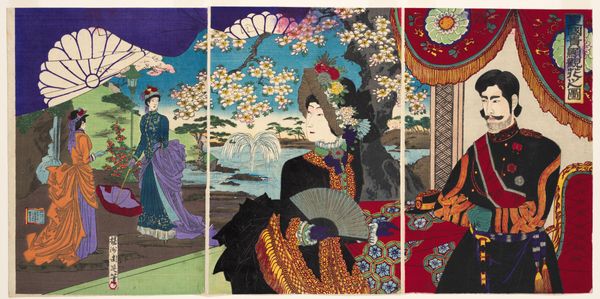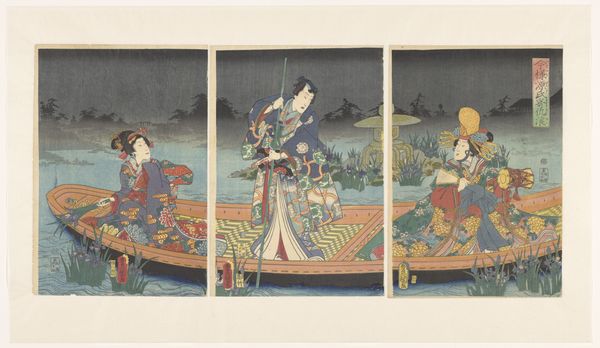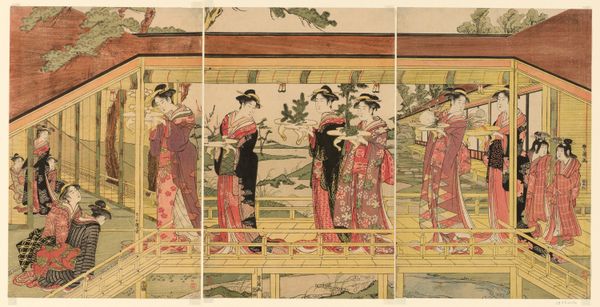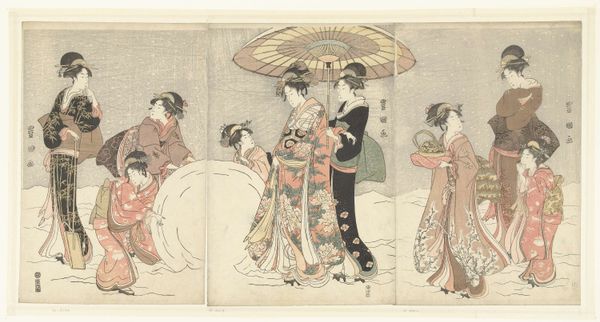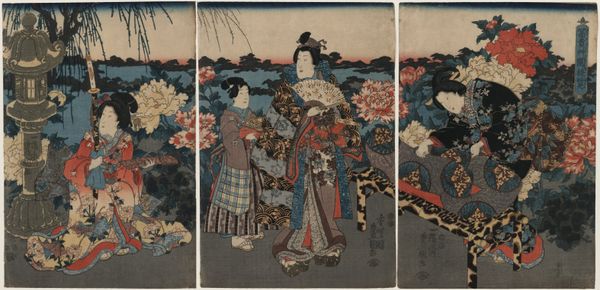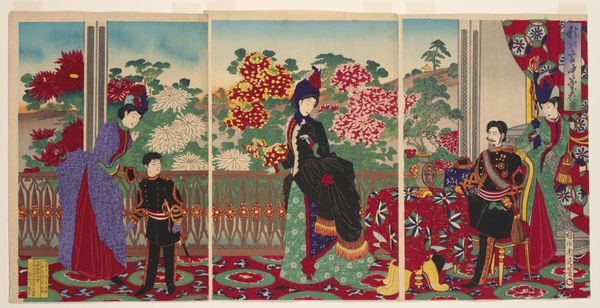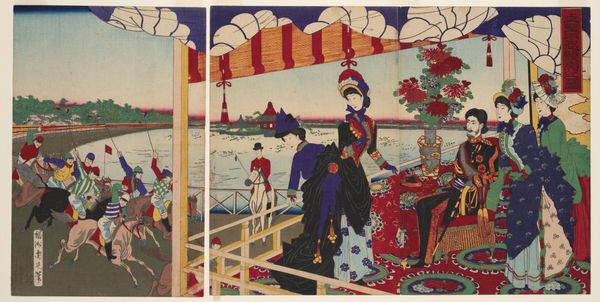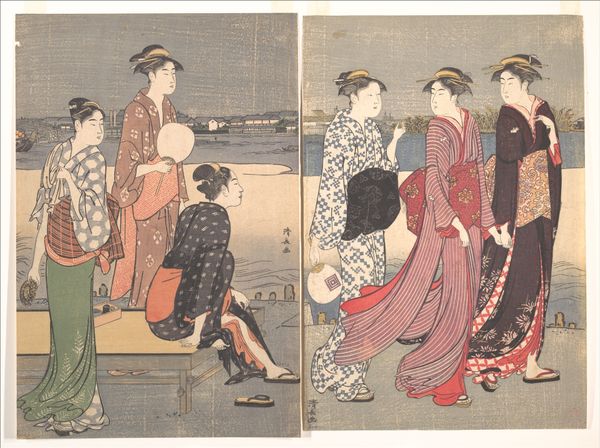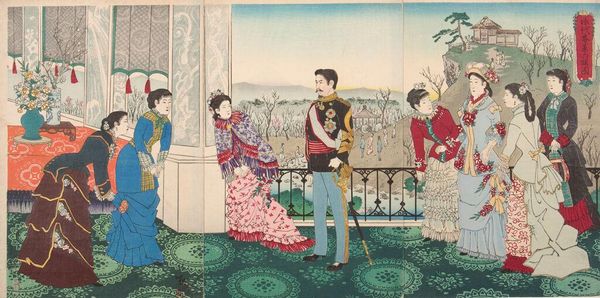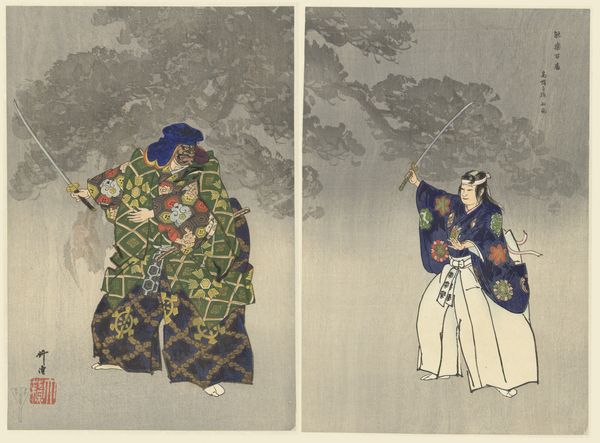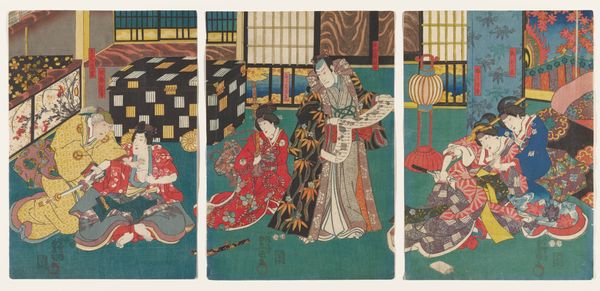
Copyright: Public domain
Editor: This triptych woodblock print is entitled "Illustration of the Garden Refreshed after the Rain" by Yōshū Chikanobu, made in 1888. What immediately strikes me is the juxtaposition of Western-dressed figures within a traditional Japanese landscape. What’s your interpretation of this melding of cultures? Curator: It's a fascinating snapshot of Japan during the Meiji period. The adoption of Western fashion by elite women reflected Japan's rapid modernization and its desire to be seen as equal to Western powers. What's often overlooked is the *politics* embedded within these seemingly decorative images. The representation of Western attire was a conscious effort to visually communicate Japan's embrace of progress on a global stage, while keeping Japanese-style landscapes. Editor: So it was almost performative? A display of newfound cultural and economic capital? Curator: Exactly. And the *ukiyo-e* tradition, previously focused on courtesans and actors, now included images that promoted this new social order. Consider how the *print* medium, which was widely accessible, played a key role in disseminating these images and shaping public perception. It suggests to a wider audience, "This is what modern Japan looks like". Does this resonate with your initial reaction to it? Editor: Yes, absolutely. The blending initially struck me as purely aesthetic, but understanding the socio-political motives gives it a much richer, almost propagandistic layer. Curator: Indeed, these prints were commodities operating within a complex system of power, prestige, and national identity formation. Looking at the rainbow, for instance, one might think it's purely decorative but what if, instead, it represents a promise for the future of modernizing Japan? How do you feel about that idea? Editor: It makes the entire piece feel far more intentional, far more thought out than just an aesthetic work. I hadn’t considered the way something like printmaking would allow this to become a very persuasive piece for that time period. Thanks for this enlightening discussion! Curator: My pleasure! Thinking about art through the lens of history opens up exciting new avenues for interpretation and connects us to the complex forces that shaped its creation and reception.
Comments
No comments
Be the first to comment and join the conversation on the ultimate creative platform.
